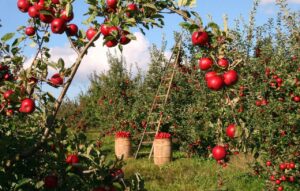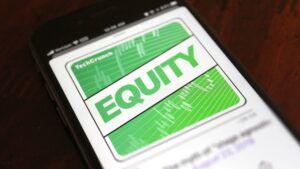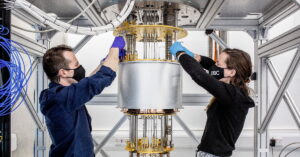In December 2013, Albinder Dhindsa and Saurabh Kumar started Grofers out of Gurugram. They wanted to solve the on-demand pick-up and drop-off services for Indian consumers in partnership with local stores, which were struggling to solve this problem.
Grofers stepped in with an aim was to ensure that consumers benefited on the quantity and quality front. As of 2021, transactions between merchants and consumers are much more organised and many gaps have been filled– thanks to an entire ecosystem’s tech-led approach to solving problem statements.
Now, the Softbank backed e-grocer, which is focusing on private label products to drive overall sales growth, is expecting its gross merchandise value (GMV) to grow 4X to around Rs 30,000 crore by 2022.
The company logged $1 billion in GMV (total value of merchandise sold over a period) in the financial year 2020, and is on road to double it every year.
Building an ecosystem
Soumen Sarkar, Senior Director, Product, Grofers, explains that the team founded the company with the belief that technology could transform India’s vast unorganised grocery ecosystem by empowering small businesses and local entrepreneurs, and eventually make the life of consumers and communities better.
“With this belief, we created proprietary technology to empower an entire ecosystem of manufacturer partners, merchant partners, and delivery partners to provide consumers with enhanced access to products that are delivered to their doorstep – all this while increasing efficiency (lowering costs) and creating further affordability (increasing savings) for consumers,” Soumen says.
Grofers’ technology and product empowers an entire grocery ecosystem. It includes a consumer app that serves consumers, and several proprietary technology systems that improve efficiency and “enable partners to grow their business reliably in serving consumers”.
Through the years, the consumer app has evolved as people have increasingly trusted Grofers to service their entire household needs – whether it is packaged food staples, beverages and snacks, fruits and vegetables, hygiene and personal care products, or the numerous other household items that are part of daily living.
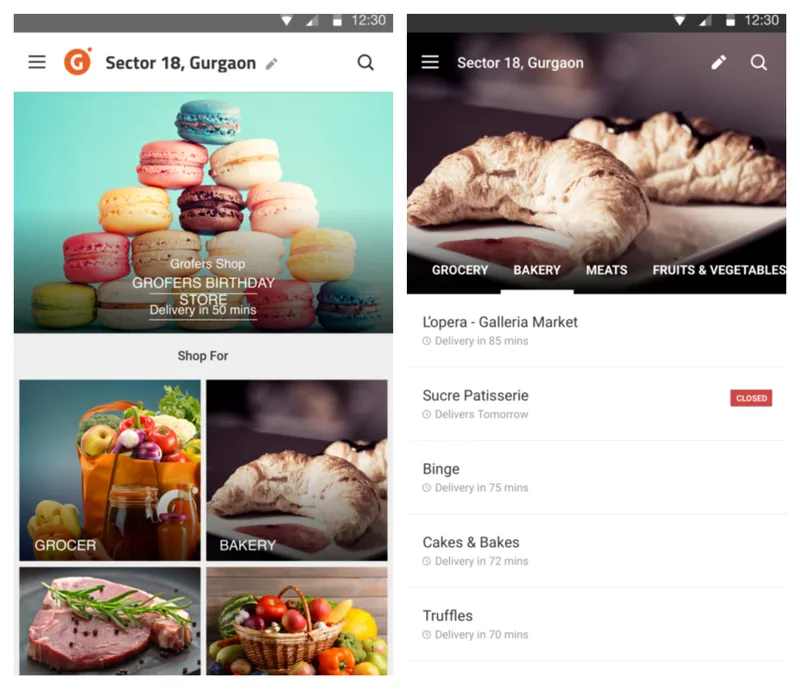
The partner and consumer sides
The initial app was elementary. The objective then was to solve last-mile delivery logistics at a hyperlocal level. It took the team close to three months to build the first prototype, which was an iteration on top of the B2B delivery app for merchant partners.
The consumers included grocery shops, pharmacies, bakeries, stationery shops, and electronics stores in a few cities, and the team singularly focused on delivering the ordered item(s) in less than 90 minutes.
“Over time, our app has evolved with a more layered approach to gratifying our consumers and providing them better options and offers to choose from. We managed to accomplish this product transition over the years, thanks to our continued focus on attracting and nurturing the best talent from across the country,” Soumen says.
He explains the app has learnt to understand each consumer’s needs and provide a personalised interface that enables ease of shopping of the most relevant and frequently bought items. It also enables discovery of newer items and ways to improve the health and quality of living.
On the partner side, the products have evolved to allow all participants in the ecosystem to benefit.
● Manufacturers can better understand evolving consumer needs and develop new products or schedule their manufacturing processes for capital efficiency.
● Merchant partners can run automated replenishment and optimal picking paths to boost productivity and manage their own capital requirements.
● Delivery partners can earn double their usual incomes via additional revenue streams, utilising their storefronts as micro warehouses, and provide steady delivery income while having a flexible work schedule.
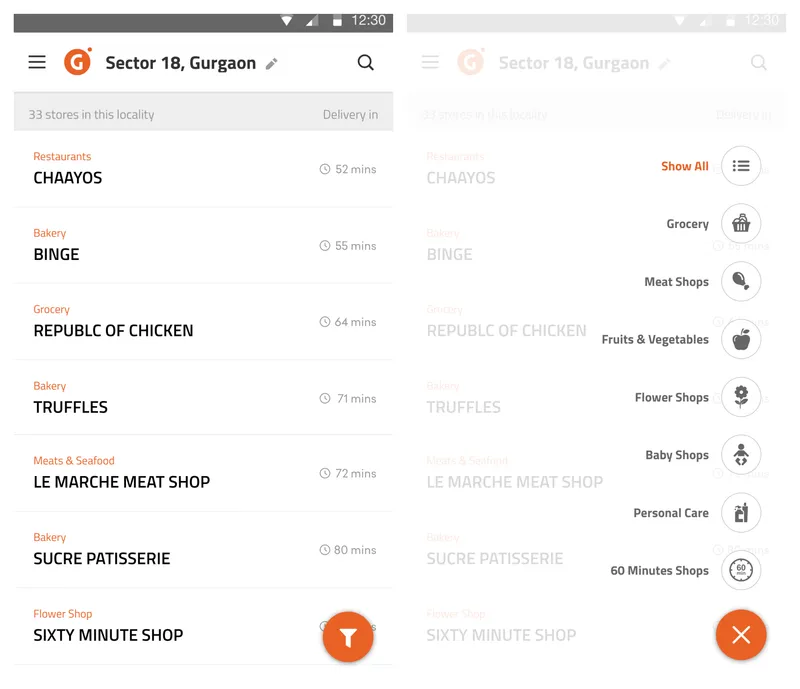
Learning on the go
The first consumer app presented a list of product categories for consumers to navigate and find the products they wanted to shop for. The category listing enabled easier discovery. However, as orders started rolling in, the team realised that consumers would end up buying different products from different merchant partners, resulting in a very poor experience – multiple delivery executives would be ringing the doorbell to deliver one to three items each, substantially increasing the points of failure and costs for the team.
“We quickly moved to a solution that ensured that a consumer could see which merchant they were buying products from, and remembering their previous selection as the default option for all orders in subsequent app opens (while allowing the flexibility to change their selection if desired). This tremendously improved the consumer experience and allowed us to grow order volumes with lower complexity and costs,” Soumen says.
This continued for around six months as Grofers was in a rapidly evolving consumer ecosystem.
Soumen says they soon realised that consumers cared about getting the products they needed; they were not necessarily interested in knowing how the orders were being fulfilled. They also wanted the platform to pick the best prices and the most appropriate set of items for them. Over those six months, the team kept iterating to a point where they realised that showing consumers relevant products was key.
“This led to our first major rehaul where we did the hard work for consumers, making relevant choices from the angle of pricing, selection, and service. We quickly adopted a rapid release cycle, eventually settling on shipping an app update once every two weeks.
“The app also underwent a major change every six to eight months as we evolved in our understanding of consumer needs. We saw traction from different kinds of consumers in addition to the early adopters, and the partner ecosystem started to grow to service more consumer needs,” Soumen says.
The core ingredients
In the early days, word of mouth was the only source of growth and the team was growing 4-5X month on month. This led to a scramble to quickly scale up everything – the app, the technology backend, and the number of merchant and delivery partners.
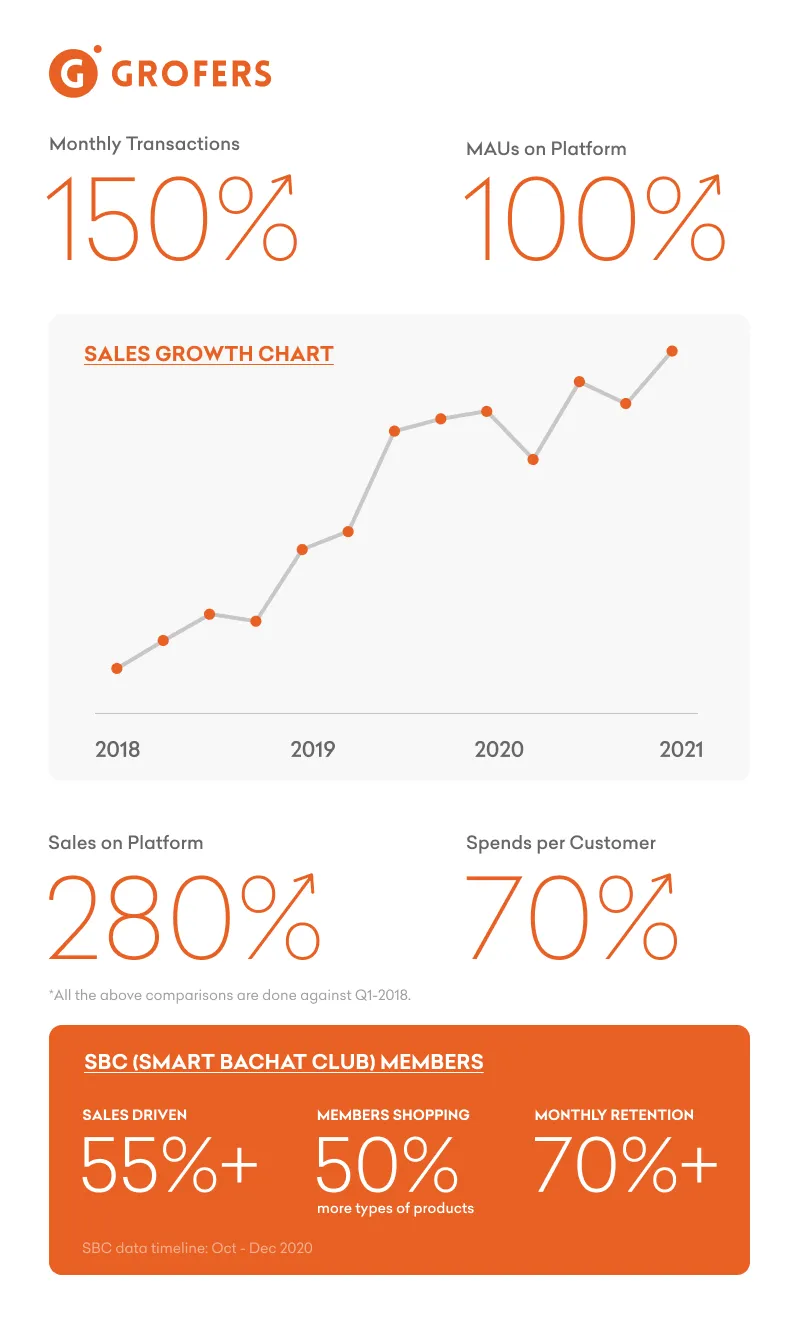
Many ingredients critical to Grofers – a loyal and wide consumer base, reliable and efficient supply chain spanning multiple stakeholders, and lower costs without compromising on consumer experience – have been made possible by the unique end-to-end technology innovations across various aspects of the grocery supply chain. Some of the core factors are:
a. Seamless shopping experience: Easy navigation and discoverability , selection of delivery slots, easy checkout process, hassle-free returns, and automated faster complaint resolution (chat box).
b. Personalisation: Customised merchandising and offers. Drives discoverability of relevant items for consumers, increases consumption and wallet share.
c. Demand forecasting and inventory management: Data science-led proprietary forecasting model that accounts for local and seasonal variations and helps merchant partners become more cost efficient and relevant. This helps manufacturers and merchant partners plan production cycles, dispatch, and inward operations. It provides consumers better availability of products, helps manufacturers plan production cycles better, helps merchant partners to lower working capital and improve capacity utilisation, and provides easy access to performance metrics such as fill rates and refill TATs to help stakeholders identify improvement areas, he says.
d. Warehousing advantage: This focuses on automated inward scheduling, location tagging, smarter shelving, dynamic pick paths to drive efficiency and mobile-enabled picking to reduce errors, staffing management, easy access to capacity utilisation and projections. The benefits include lower cost percentage of platform sales without compromising on service quality for partners, standardisation across facilities, and scalability across geographies.
e. Delivery leadership: Route optimisation, auto-routing, and easy logging of missing items offer multiple benefits, including faster delivery timelines, improved consumer experience, better utilisation of man hours, and high returns for delivery partners.
Consumer feedback loop
A recent report by RedSeer Consulting reveals that India’s hyperlocal e-grocery market is growing at 106 percent. The COVID-19 pandemic has brought e-grocery players to the forefront as people prefer to stay home and opt for doorstep deliveries. Grofers competes with the likes of BigBasket, Dunzo, and Swiggy’s Instamart.
Grofers has also focused on a strong user feedback loop, constantly analysing data (quantitative) and speaking to consumers (qualitative) to understand the next space for improvement.
Soumen explains. “We noticed that some consumers would cancel an order placed a few minutes ago and reorder the same set of items just to be able to add an extra item or two that they forgot in the original order. This led us to develop an edit-order functionality that allows consumers to seamlessly combine the additional items with their previous order and get in the same delivery slot, without any inconvenience or delivery charges.”
When consumers wanted more products to choose from but merchant partners were under strain to stock more items and lock up additional capital, Grofers built a forward deployment system that uses AI/ML on large datasets and predicts the likely sales of thousands of items to only move the required quantities to merchant locations, allowing them to keep a wider assortment without increasing the total amount of storage space needed.
This also enables faster deliveries of these items to consumers, further enhancing the benefits for the entire e-grocery ecosystem.
Speaking of the future, Soumen says, “We want our consumers to shift from passive consumption to active participation on our platforms. We want their experience to be finely crafted and precision engineered. We aim to make the entire shopping experience more rewarding and enjoyable for our consumers.”

![You are currently viewing [Product roadmap] From a focus on local stores to creating an entire grocery ecosystem: the Grofers journey](https://blog.digitalsevaa.com/wp-content/uploads/2021/04/PRM-1619523041829.png)
